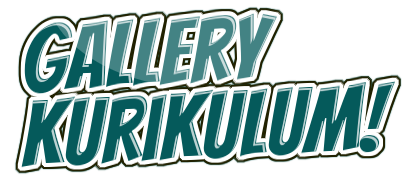Introduction
Exterior cladding plays a crucial role in defining a building’s aesthetic appeal while providing insulation, weather resistance, and durability. As architecture evolves, new trends in cladding materials and styles emerge, shaping the future of residential and commercial spaces. In 2024, sustainability, innovation, and bold designs dominate the cladding industry.
Sustainable and Eco-Friendly Cladding
With growing environmental concerns, sustainable cladding solutions are becoming the top choice. Homeowners and architects are opting for materials with a low carbon footprint, such as recycled metals, biodegradable composites, and FSC-certified wood. These materials reduce waste while maintaining durability and aesthetic appeal.
Natural Wood Cladding Revival
Wood cladding is making a comeback, thanks to its timeless charm and eco-friendly properties. Reclaimed wood is widely used for rustic aesthetics, while thermally modified wood enhances durability and resistance to pests and moisture. Sustainable forestry-certified wood ensures responsible sourcing.
Metal Cladding Innovations
Modern architectural designs embrace metal cladding for its industrial appeal and strength. Aluminum, zinc, and steel are favored for their corrosion resistance, lightweight properties, and recyclability. Anti-corrosion coatings and textured finishes elevate their durability and aesthetic value.
Composite and Fiber Cement Cladding
Composite and fiber cement cladding continue to be popular due to their exceptional durability and low maintenance. These materials mimic natural textures while providing superior weather resistance. Top brands now offer improved versions with better insulation and sustainability features.
Textured and 3D Cladding Panels
Homeowners and designers are opting for textured and 3D cladding panels to add depth and visual interest to exteriors. Embossed designs, geometric patterns, and decorative finishes make buildings stand out while maintaining weather resistance.
Glass Cladding for a Futuristic Look
Glass cladding is redefining modern architecture by enhancing transparency and energy efficiency. Smart glass technology, which adjusts light transmission, is gaining popularity for sustainable buildings. Combining glass with metal or composite materials creates stunning exterior designs.
Color Trends in Exterior Cladding
In 2024, earthy tones such as terracotta, warm browns, and deep greens dominate the market. At the same time, bold dark hues like charcoal and navy blue are trending, offering a sleek, contemporary look. Mixing colors and textures adds uniqueness to facades.
Large Format Panels and Seamless Finishes
Minimalist architecture favors large-format panels for seamless, clean designs. These panels reduce visible joints, enhancing aesthetics while simplifying installation. Materials like fiber cement and composite panels enable sleek, modern finishes.
Insulated and Energy-Efficient Cladding
Energy-efficient cladding materials help regulate indoor temperatures, reducing energy costs. Insulated metal panels, aerated concrete, and innovative smart cladding materials improve thermal efficiency, making them ideal for eco-conscious homeowners.
Traditional Brick and Stone with a Modern Twist
Classic brick and stone cladding remain popular, but new lightweight engineered stone panels offer easier installation and enhanced durability. Mixing traditional materials with modern designs creates a striking contrast.
Low-Maintenance Cladding Solutions
Homeowners are opting for low-maintenance cladding materials like pre-coated metal, fiber cement, and composite panels. These materials require minimal upkeep, resist UV rays, and withstand harsh weather conditions.
Mixed-Material Cladding for Unique Designs
Architects are combining multiple materials, such as wood, metal, and glass, to create dynamic, visually striking facades. This trend enhances curb appeal and offers limitless customization possibilities.
Prefabricated and Modular Cladding Systems
Offsite construction is revolutionizing cladding with prefabricated systems. These systems speed up installation, reduce labor costs, and ensure precision in design. Prefabricated panels offer both aesthetic appeal and functional benefits.
Conclusion
The exterior cladding trends of 2024 highlight sustainability, innovation, and bold aesthetics. With advancements in materials and technology, homeowners can enjoy durable, energy-efficient, and visually appealing solutions. Whether choosing natural wood, metal, or composite panels, the key is to select a material that suits both design preferences and environmental values.
FAQs
- What is the most durable cladding material for 2024?
- Fiber cement, composite panels, and metal cladding are among the most durable options.
- Is sustainable cladding more expensive than traditional options?
- Initially, it may cost more, but sustainable materials provide long-term savings in maintenance and energy efficiency.
- How does cladding improve energy efficiency?
- Insulated cladding helps regulate indoor temperatures, reducing heating and cooling costs.
- What are the top colors for exterior cladding in 2024?
- Earthy tones, deep greens, warm browns, and dark shades like charcoal are trending.
- Can cladding be customized to match my home’s design?
- Yes, various materials, textures, and colors allow complete customization to suit any architectural style.
